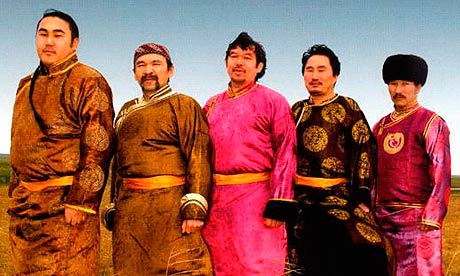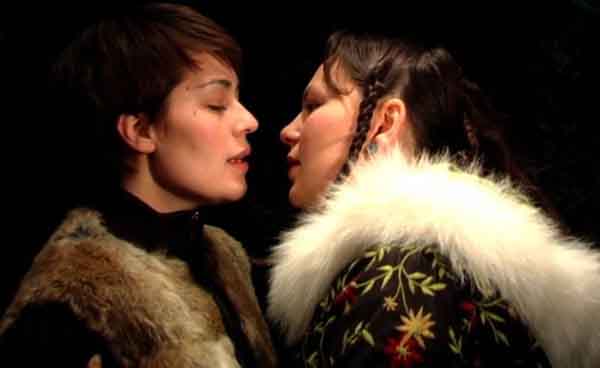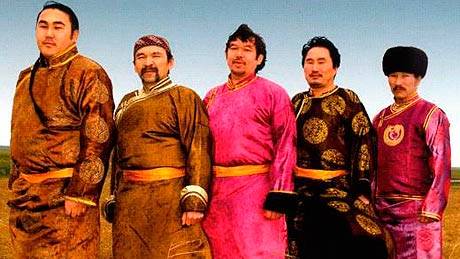Otherworldly, yet so human: The Art of Throatsinging
Hey, what’s that sound: Throat singingBy David McNamee | Guardian.co.uk
A droning, pulverising sound of shamanic origin, this is ancient soul music from the east.

What is it? A catch-all term covering different disciplines of extreme vocal technique from around the world, often recognised as a low, pulverising, drone-growl that western ears sometimes interpret as "scary". But the history behind the throat singing traditions of Inuit tribes and the people of Siberia has strong cultural significance, and the overlapping, oscillating vocal tones (several different notes are produced in the mouth of one singer simultaneously) can be transcendent and beautiful.
...
How does it work? The Tuvan overtone technique involves producing a droning note that is raised and lowered by opening and closing the vocal cords until harmonic resonances appear. It is the abrupt open-and-shut of the vocal cords that (through a process known as biofeedback) apparently charges the higher harmonics with increasing energy, resulting in separation between up to six simultaneous tones. Inuit katajjaq (and the now-extinct Japanese rekukkara) throat singing is less dependant on overtones, instead two women will stand holding and facing each other and alternately sing either words, or half-words, or just abstract tones, faster and faster into each others mouths, with the "receiving" woman modulating the incoming stream of sound by adjusting the shape of her open mouth.
Where does it come from? Tuvan throat singing, like the (not dissimilar-sounding) Aboriginal didgeridoo is said to physically connect the singers to the spirituality of the Tuvan mountainside. The singing styles were supposedly modelled on the harmonic resonances herders would find naturally occurring around valleys or waterfalls, with some vocal styles configured to mimic the sounds of animals, wind or water. Inuit tradition doesn’t actually posit throat singing as music in itself, it evolved and continues as a game or competition that Inuit women would play to pass the time, the first woman to lose pace, run out of breath or start laughing is the loser.
Why is it classic? Throat singers sound as though they have a whole orchestra of instruments, that could never be invented by human hands, caged inside their bodies. It is ancient soul music.
What’s the best ever throat singing song? It’s not really a "song" medium, so don’t expect it to click with you instantly, but start with Tagaq and Huun Huur Tu.
Video from: YouTube.com
Five facts and things
Tanya Tagaq admits she was not good at traditional competitive Inuit singing. It was by removing the technique from its role as a game, and imbuing her singing with deep emotion, that she found a new musical language.
There are some examples of overtone singing in European classical music. Stockhausen’s awesome Stimmung, for instance, or Tan Dun’s Water Passion after St Matthew.
The most famous non-traditional throat singer was the American blues musician Paul Pena, who brought self-taught throat singing into his bottleneck blues, and who in the 1999 documentary Genghis Blues travelled to Tuva to compete in throat singing contests.
What is it in the European musical psyche that links overtone singing to the demonic? Tenores is the profane counterpoint to cuncordu, Sardinia’s sacred polyphonic choir music. The styles are differentiated by the use of overtone singing in tenores, which also allocates roles in a four man-choir to each emulate the sounds of wind, sheep and cows.
There are four main disciplines of Tuvan overtone singing: khorekteer ("chest voice"), khomeii (a swirling, wind-like sound), sygyt (piercing, whistling bird noises), and kargyraa (the deep growling sound, said to be a figurative depiction of winter in Tuvan folklore).

Inuit throat singing is traditionally performed by two women at very close distance.
Video from: YouTube.com
Video from: YouTube.com
Video from: YouTube.com
Video from: YouTube.com
Video from: YouTube.com






















